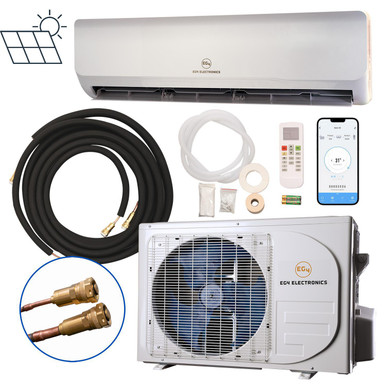WorldwideDave
New Member
I want to add air conditioning to my house. I want it to run off solar. It can be a dc to dc or an AC powered unit. It can be a heat pump or other inverter as well - most efficient, but I'm flexible on efficiency vs price. Example: Mini-splits can be bought for $500, or they can cost $2300 depending on brand, etc. I'm more on the budget side, I'm letting you know that now.
Assuming I run the a/c unit let's say for 10 hours a day, and I know it is going to cycle, and it must be a 120V unit because I can't do 240V, and the house is in southern california, I need to know the following:
Battery size - how many kWh or amp hours does the battery or battery bank need to be if there was NO sun for just one day?
Example: I have a 200 amp hour battery rated at 2560 Watt Hours (I think). THat's roughly 12v times 200 amps = 2400 watt hours, but voltage is typically higher when at full charge.
I believe that most mini-split, portable, or window-mount 120V a/c units use 13 amps or so and have a surge to start. Therefore, I am also looking for the right inverter size for such a setup.
Once I know that, I'll want to know panels needed and a recommended solar charge controller.
But until then, any or help or guidance on battery sizing would be great.
I thank you in advance for your responses.
Assuming I run the a/c unit let's say for 10 hours a day, and I know it is going to cycle, and it must be a 120V unit because I can't do 240V, and the house is in southern california, I need to know the following:
Battery size - how many kWh or amp hours does the battery or battery bank need to be if there was NO sun for just one day?
Example: I have a 200 amp hour battery rated at 2560 Watt Hours (I think). THat's roughly 12v times 200 amps = 2400 watt hours, but voltage is typically higher when at full charge.
I believe that most mini-split, portable, or window-mount 120V a/c units use 13 amps or so and have a surge to start. Therefore, I am also looking for the right inverter size for such a setup.
Once I know that, I'll want to know panels needed and a recommended solar charge controller.
But until then, any or help or guidance on battery sizing would be great.
I thank you in advance for your responses.




